As a product manager or leader, your ability to manage stakeholder relationships is as critical as your strategy and execution skills. In fact, those relationships have a real chance to make or break a project whether it’s a new product launch, product strategy planning process, or any other project your product team is working on.
Think about it: When you’ve experienced a project going off the rails in some way – how strong was the stakeholder communication in that failed project? Chances are, it wasn’t very strong at all – as a leading cause of tech projects failing comes down to ineffective stakeholder communication. This reality highlights the crucial role of stakeholder management in the tech industry, making it an indispensable skill for product professionals aiming to drive successful outcomes.Yet, sometimes conflict gets confused with a lack of communication. Conflict with stakeholders can be quite healthy… and it’s simply inevitable. Understanding the inevitability of conflict in our highly interconnected roles to learning how to manage it constructively can equip Product Managers and Product Leaders with practical insights and tools that can ultimately translate into more successful projects. This isn’t just about avoiding pitfalls; it’s about transforming potential conflicts into opportunities for innovation and effective collaboration. By the end of this read, you’ll have a clearer understanding of how to turn challenging interactions into productive dialogues and build stronger, more successful products through enhanced stakeholder management.
The inevitability of conflict within your Product Team
On any product team, conflict isn’t just a possibility; it’s a given. The role of a Product Manager is inherently collaborative, requiring constant interaction with a diverse set of stakeholders, each with unique goals and perspectives. These stakeholders range from developers and designers to marketing teams, sales departments, and upper management. The diversity of these groups, essential for a well-rounded product, naturally leads to a variety of viewpoints and, inevitably, conflicts.
However, that conflict, when managed properly, can be a powerful tool. Avoiding conflict, as tempting as it may seem, often leads to more significant issues down the line. This was a key point emphasized by Roman Pichler in his talk at the European edition of INDUSTRY: The Product Conference. He argued that avoiding conflicts might temporarily create a facade of harmony, but underneath, unresolved issues continue to simmer, potentially leading to bigger problems. Instead, embracing and constructively managing these conflicts can lead to innovative solutions and stronger product strategies.
Consider the development of the original iPhone. According to Walter Isaacson, who literally wrote the book about Steve Jobs, the development of the original iPhone was a period marked by intense internal conflict, primarily between the hardware and software teams at Apple. Steve Jobs, known for his exacting standards and visionary approach, pushed for a device that was not only technologically advanced but also impeccably designed. This ambition set the stage for a series of challenges and disagreements among teams.
On one side, the hardware team, led by design guru Jony Ive, was focused on creating a sleek, minimalist device. They envisioned a phone that was not only functional but also a piece of art. This vision often clashed with the practical realities faced by the software team, led by Scott Forstall. The software team had to ensure that the operating system and applications not only worked seamlessly but also fit into the design constraints set by the hardware team. This clash was particularly evident in the development of the iPhone’s touch screen interface. The hardware team’s insistence on a button-less, all-screen design posed significant challenges for the software team, which had to develop a user-friendly and intuitive interface for a touch-based phone – something that had never been done before on such a scale.
These internal conflicts, while challenging, ultimately proved to be a driving force behind the iPhone’s groundbreaking design and functionality. The tensions between maintaining a minimalist design and delivering advanced features led to innovative solutions, such as the development of the multi-touch interface, which allowed for gestures like pinching and swiping. This interface became a defining feature of the iPhone and set a new standard for smartphone interaction.
Make no mistake – the conflicts felt during the iPhone’s development were very difficult for the teams at Apple. But they were instrumental in pushing the boundaries of what was possible in smartphone technology. They fostered a culture of innovation and problem-solving that not only resolved the immediate challenges but also led to the creation of a device that would revolutionize the telecommunications industry.
But that’s Apple – and Apple is always different. Right? Let’s consider a more relatable scenario…
At INDUSTRY, Pichler introduced another scenario that may be hypothetical, but I bet you’ve experienced this more than a few times. In this scenario, a conflict arises when “Sophie”, the Head of Sales, demands the inclusion of a new feature in the upcoming release. This feature was not part of the original plan, and adding it would put a strain on the already tight resources and timelines. Sophie, as a senior stakeholder, wields considerable influence, and her insistence on this addition presents a significant challenge for the Product Manager.
So… what do you do if you’re the one dealing with Sophie?
On one hand, there’s the pressure to accommodate the requests of influential stakeholders like senior executives – especially when they’re well respected internally. On the other, there’s the reality of resource constraints and the importance of adhering to the product vision and roadmap. The Product Manager in this situation faces a tough decision of how to balance these competing interests without compromising the product’s integrity or timeline.
Possible reactions in this scenario vary.
A product manager might initially consider outright rejection of the request to stay on track with the current plan. However, this risks alienating an important stakeholder and potentially missing out on valuable input. Alternatively, they could acquiesce to the demand, but this sets a dangerous precedent, opening the door for future disruptions and potentially harming the product’s overall strategy and coherence.
A more nuanced approach involves negotiation and collaboration. This would mean engaging in a dialogue with Sophie to understand her motivations and the significance of the feature she’s requesting. Perhaps there’s a compromise to be found – a way to incorporate her input in a manner that aligns with the product’s goals and resources. This route requires strong communication skills, empathy, and a deep understanding of both the product’s needs and the stakeholder’s interests.
The key here is not to view the scenario as a win-lose situation but as an opportunity for collaborative problem-solving. It’s about striking a balance between being receptive to stakeholder input and staying true to the product vision, all while managing resources effectively. This delicate balancing act is at the heart of what makes product management both challenging and rewarding.
So how do you actually effectively manage this kind of conflict?
First, it’s important to consider what not to do. In Pichler’s discussion, he highlights four common but unproductive strategies that Product Managers might deploy when dealing with difficult stakeholders. These aren’t what’s recommended – but they’re strategies that are more common that we all care to admit:
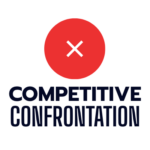 Competitive Confrontation: This approach involves directly opposing the stakeholder, often with a combative stance. While it might feel satisfying to stand your ground, this strategy can lead to damaged relationships and a hostile work environment. It creates a win-lose dynamic where collaboration and mutual understanding become secondary to ‘winning’ the argument.
Competitive Confrontation: This approach involves directly opposing the stakeholder, often with a combative stance. While it might feel satisfying to stand your ground, this strategy can lead to damaged relationships and a hostile work environment. It creates a win-lose dynamic where collaboration and mutual understanding become secondary to ‘winning’ the argument.
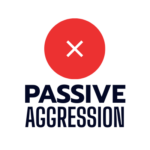 Passive Aggression: Here, a Product Manager might outwardly agree or seem compliant but internally resist or undermine the stakeholder’s request. This approach can breed a toxic atmosphere of mistrust and hidden agendas. It often leads to a breakdown in communication and hinders the possibility of finding a constructive resolution.
Passive Aggression: Here, a Product Manager might outwardly agree or seem compliant but internally resist or undermine the stakeholder’s request. This approach can breed a toxic atmosphere of mistrust and hidden agendas. It often leads to a breakdown in communication and hinders the possibility of finding a constructive resolution.
 Conflict Avoidance: Opting to sidestep or ignore the conflict might seem like a path to maintaining peace. However, this strategy often leads to unresolved issues simmering beneath the surface, potentially erupting later in more severe forms. Avoidance fails to address the root causes of the conflict, preventing any chance of a productive outcome.
Conflict Avoidance: Opting to sidestep or ignore the conflict might seem like a path to maintaining peace. However, this strategy often leads to unresolved issues simmering beneath the surface, potentially erupting later in more severe forms. Avoidance fails to address the root causes of the conflict, preventing any chance of a productive outcome.
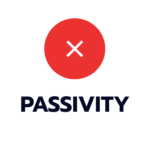 Passivity: This involves acquiescing to the demands of the stakeholder without any pushback. While this might maintain a superficial harmony, it often comes at the cost of the product’s integrity and the Product Manager’s authority. Over time, this can lead to a pattern where the loudest voice always wins, rather than the best idea.
Passivity: This involves acquiescing to the demands of the stakeholder without any pushback. While this might maintain a superficial harmony, it often comes at the cost of the product’s integrity and the Product Manager’s authority. Over time, this can lead to a pattern where the loudest voice always wins, rather than the best idea.
There is a better way though, according to Pichler.
An effective alternative to these strategies is the Behavioral Change Stairway Model, developed by the FBI for crisis negotiations. And hey, if it’s good enough for diffusing intense crises, it’s probably sufficient enough to help us manage conflict within our Product Teams! This model provides a structured approach to transforming potentially adversarial interactions into collaborative dialogues.
Here’s how it can be applied in product management.
 Active Listening: The first step involves genuinely listening to the stakeholder’s concerns and viewpoints. This isn’t just about hearing their words but understanding the emotions and motivations behind them. Active listening helps in building a foundation of trust and demonstrates that their perspective is valued.
Active Listening: The first step involves genuinely listening to the stakeholder’s concerns and viewpoints. This isn’t just about hearing their words but understanding the emotions and motivations behind them. Active listening helps in building a foundation of trust and demonstrates that their perspective is valued.
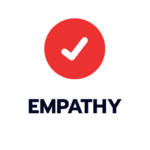 Empathy: Once you’ve actively listened, the next step is to empathize. Put yourself in the stakeholder’s shoes and try to see the situation from their perspective. Empathy doesn’t necessarily mean agreement, but it does involve a genuine attempt to understand their position and concerns.
Empathy: Once you’ve actively listened, the next step is to empathize. Put yourself in the stakeholder’s shoes and try to see the situation from their perspective. Empathy doesn’t necessarily mean agreement, but it does involve a genuine attempt to understand their position and concerns.
 Rapport: Building on empathy, the next goal is to establish rapport. This involves finding common ground and connecting on a human level. When stakeholders feel a personal connection, they’re more likely to be open to collaboration and compromise.
Rapport: Building on empathy, the next goal is to establish rapport. This involves finding common ground and connecting on a human level. When stakeholders feel a personal connection, they’re more likely to be open to collaboration and compromise.
 Influence: With a foundation of trust and understanding, you can now begin to influence the stakeholder’s perspective. This doesn’t mean manipulation; it’s about using the established rapport and empathy to guide the conversation towards constructive solutions.
Influence: With a foundation of trust and understanding, you can now begin to influence the stakeholder’s perspective. This doesn’t mean manipulation; it’s about using the established rapport and empathy to guide the conversation towards constructive solutions.
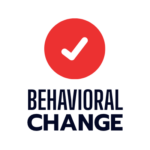 Behavioral Change: The ultimate goal is to encourage a change in behavior that aligns with the product’s objectives and the needs of all parties. This change is more likely to be sustainable as it’s built on a foundation of mutual understanding and respect.
Behavioral Change: The ultimate goal is to encourage a change in behavior that aligns with the product’s objectives and the needs of all parties. This change is more likely to be sustainable as it’s built on a foundation of mutual understanding and respect.
Applying this model in product management means moving away from unhelpful conflict strategies and towards a more collaborative and empathetic approach to stakeholder management. This turns potential conflicts into opportunities for building even stronger relationships which can help lead to finding more innovative solutions that benefit the product and all stakeholders involved.
The soft skills matter… a lot.
Effective stakeholder management requires more than just technical know-how; it demands a mastery of interpersonal skills, with listening and empathy at the forefront. These skills are not just about passive reception but active engagement, helping to build a foundation of trust and understanding that is crucial for successful product management. Some ideas for “flexing these interpersonal muscles” include:
Engage with Full Attention and Reflective Paraphrasing: Active listening is about giving your full attention to the speaker, which signals respect and interest. But it goes beyond just hearing words; it’s about understanding the deeper meaning behind them. For example, when a stakeholder expresses concern about a project’s timeline, they might not just be worried about the schedule but also about their credibility or the impact on their team. Acknowledge this by paraphrasing their concerns and asking clarifying questions. This approach was notably used by Satya Nadella, CEO of Microsoft, who transformed the company culture by encouraging empathetic listening among his team.
Recognize and Validate Emotions: Empathy in stakeholder management involves recognizing and validating the emotions behind a stakeholder’s words. This doesn’t mean you have to agree with their viewpoint, but acknowledging their feelings can create a space where they feel heard and understood. For instance, if a stakeholder is frustrated with a product decision, acknowledging their frustration before jumping into problem-solving can diffuse tension.
Foster Open Dialogue with Open-Ended Questions: Encouraging stakeholders to share more of their thoughts can be achieved through open-ended questions. This technique not only provides you with more information but also shows the stakeholder that you value their input. This method has been effectively used in companies like Pixar, where open forums and candid discussions are encouraged to foster creative collaboration.
Integrating these approaches into your stakeholder interactions can transform potential conflicts into opportunities for deeper understanding and collaboration. By actively listening and empathizing, you’re not just managing stakeholders; you’re building lasting relationships that can lead to more successful and innovative product outcomes.
The TLDR with all of this:
Becoming adept at conflict resolution is more than a necessity – it’s an opportunity for growth. It’s a skill that not only improves product outcomes but also contributes to personal leadership development of everyone involved. As such, it’s a fundamental aspect of successful product leadership that is just as important as some of the more-talked about aspects of product management. One of the biggest differentiators among the good Product Managers and Product Leaders to the truly great ones is their ability to embrace and manage conflict.
(A big thank you to Roman Pichler for his talk at INDUSTRY Europe for starting the dialogue with all of this!)




